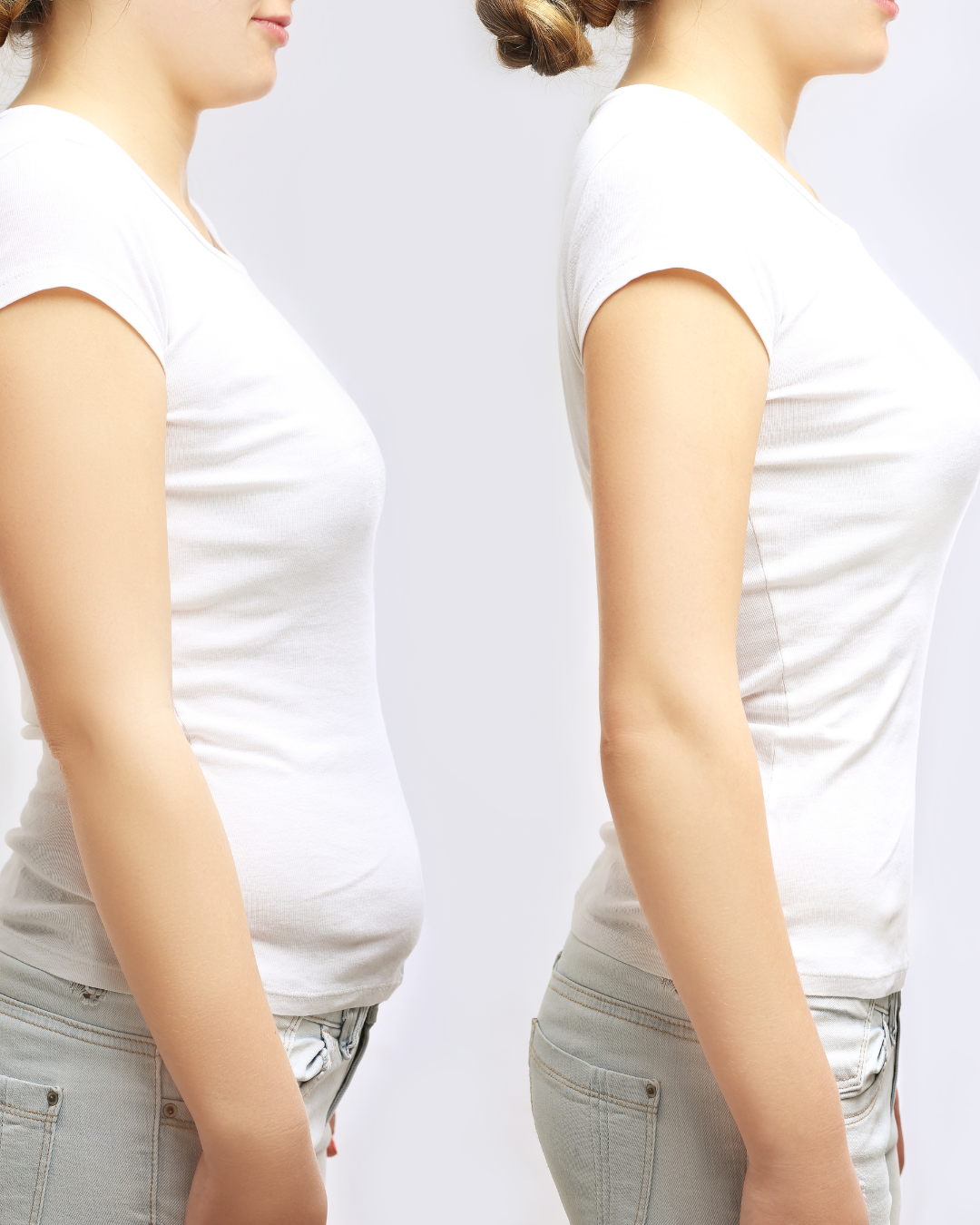
This is how you should train if you want to lose fat
Overweight and obesity are an increasingly common public health problem worldwide. These are complex conditions that affect both the physical and emotional health of those who suffer from them.
Therefore, we will analyze what they consist of , how they are classified , the factors that generate them, their consequences for health and the importance of physical exercise to prevent and treat them.
📊 Alarming statistics in Spain
If we review the data in Spain , in the group of adults , we find that:
✔ 18.7% of the population is obese .
✔ 37.1% are overweight .
➡️ That is, 55.8% of the adult population is overweight.
In the children's group, the data are also worrying:
✔ 23.3% of children are overweight .
✔ 17.3% suffer from obesity .
📢 These are worrying figures that invite us to reflect on our habits and lifestyle.
🔎 What is overweight and obesity?
These are different degrees of excess body fat , with overweight being the first step toward obesity . It's important to emphasize that this is not a cosmetic problem , but rather a chronic condition that requires an appropriate approach to reverse.
People who are overweight and have body fat are at greater risk of developing other diseases , which exacerbates their impact on health.
📏 Diagnosis and classification
One of the most widely used methods for diagnosing overweight and obesity is the Body Mass Index (BMI) , which measures the relationship between weight and height 📊.
📌 BMI Calculation:
👉 Weight (kg) / height (m)² = BMI
📊 BMI classification:
✔ Underweight : BMI < 18.5
✔ Normal weight : BMI 18.6 – 24.9
✔ Overweight : BMI 25 – 29.9
✔ Obesity : BMI ≥ 30
⚠ BMI Limitations
The BMI isn't entirely accurate because it doesn't take into account a person's body composition . For example, two people of the same weight and height may have significant differences in their percentage of fat and muscle mass .
✅ A more precise analysis includes:
📌 % body fat
📌 Total body weight
📌 % of water in the body
📌 Bone mass
📌 Visceral fat
📌 Kg of muscle mass
📢 These factors offer a more realistic and objective view of physical health.

📏 Other ways to measure, diagnose, and classify overweight and obesity
The Body Mass Index (BMI) is a widely used method, but it has its limitations . Therefore, I'd like to share other methods of measurement that are more objective and accurate .
📐 Waist-Hip Ratio (WHR) 🏃♂️
This parameter measures the relationship between the waist and hip circumference , providing a more accurate indicator to detect:
✔ Overweight and obesity
✔ Risk of coronary heart disease ❤️
✔ Possibility of developing diabetes 🩸
📌 Formula to calculate it:
👉 WHR = Waist circumference (cm) / Hip circumference (cm)
📏 How to measure correctly:
✅ Waist circumference : It is measured below the last floating rib , approximately above the navel .
✅ Hip circumference : It is measured in the highest area of the buttocks .
📢 This index is a useful tool for assessing body fat distribution and the risk of metabolic diseases.

Anthropometry / plycometry
Skinfold measurement is a technique that allows us to analyze a person's body composition through the amount of subcutaneous fat 📊.
🧐 How is it done?
✔ The thickness of skinfolds is measured in specific areas of the body.
✔ It is essential that the measurement is always carried out under the same conditions .
✔ It should be carried out by an experienced professional , to ensure accurate results .
📊 Body fat percentage and classification in women
📌 More than 40% ➡ Obesity or very overweight 🚨
📌 25% - 39% ➡ Overweight ⚠
📌 19% - 24% ➡ Normal / healthy weight ✅
📢 This method offers a more detailed analysis of body fat , allowing for a better assessment of health and progress in the event of changes in diet or physical activity.

📊 Body fat percentage and classification in women
📌 More than 35% ➡ Obesity or very overweight 🚨
📌 20% - 35% ➡ Overweight ⚠
📌 15% - 19% ➡ Normal / healthy weight ✅
📌 Less than 15% ➡ Aesthetic-focused range (requires professional supervision) 🏋♀️
What factors are multipliers for developing overweight?
and obesity?
If you have ever been told or heard: "that person is obese because they eat poorly," you have not been told the truth.
Obesity and overweight do not have a single cause, but are the result of multiple factors that influence metabolism, behavior, and overall health.
🔍 Factors that influence obesity and overweight
📌 Poorly balanced diet
✔ High consumption of ultra-processed products, rich in sugar and unhealthy fats.
✔ Choosing high-calorie foods that are poor in essential nutrients.
📌 Sedentary lifestyle
✔ Lack of physical activity and regular exercise.
✔ Many hours sitting and excessive use of screens.
📌 Genetic factors
✔ Genetics and family history can increase the risk of overweight and obesity.
✔ Key hormonal factors such as ghrelin, leptin, and the thrifty phenotype influence metabolism, appetite, and energy storage.
✔ Prevention is key, since acquired habits can modulate genetic predisposition.
📌 Psychological factors
✔ High stress, anxiety, depression, and low self-esteem can affect your relationship with food.
✔ Many people use food as an emotional escape route.
📌 Social and economic factors
✔ Limited access to healthy food in vulnerable environments.
✔ Advertising and promotion of products with low nutritional value.
✔ Lack of nutritional education in childhood.
✔ Obesogenic environment, where unhealthy habits are normalized.
🔬 Genetics also plays a key role
We often blame only the individual, but we must be aware that there are biological and genetic factors that can make weight control difficult.
🧪 Example: Ghrelin and its impact on hunger
✔ Mutations in the GHRL gene (which encodes ghrelin) or its receptor GHSR can increase the production of this hormone or sensitivity to it, which increases the feeling of constant hunger.
✔ Some genetic variants can cause ghrelin levels to not decrease after meals, preventing the person from feeling full.
✔ This is not a matter of willpower, but a biological condition that must be addressed with appropriate strategies.
📢 We must go beyond simplistic judgments and understand obesity as a complex, multifactorial, and scientifically based condition.
Health consequences
🔎 Overweight, obesity, and their health complications
The longer you remain in the overweight and obese range, the greater the likelihood of suffering from certain health complications and pathologies such as:
📌 Metabolic and hormonal diseases
✔ Insulin resistance and type 2 diabetes
✔ Gestational diabetes (in women)
📌 Cardiovascular and neurological diseases
✔ Cardiovascular diseases ❤️
✔ Neurodegenerative diseases 🧠
📌 Cancer and respiratory diseases
✔ Certain types of cancer 🎗
✔ Respiratory diseases and disorders 🫁
📌 Hormonal and fertility disorders
✔ Infertility
✔ Polycystic ovary
📌 Mental disorders
✔ Anxiety, depression, and other mental health issues
🔬 Metabolic syndrome: a silent risk
If you have three or more of the following conditions, you may have metabolic syndrome ⚠️:
✔ Waist-to-hip ratio in unhealthy ranges
✔ Insulin resistance
✔ High blood pressure
✔ High triglycerides
✔ Unhealthy cholesterol ratio
📢 Having metabolic syndrome significantly increases your risk of heart disease, diabetes, and stroke .
Physical exercise as a preventative and treatment
The approach must be multidisciplinary , but one of the key tools to redirect the situation is the combination of:
✔ Cardiovascular exercise 🏃♂️
✔ Strength training 💪
✔ Mobility and stability work 🧘♀️
✔ Increased daily activity 🚶♀️
By integrating these practices, you can achieve important health benefits :
📌 Reduction in the % of subcutaneous and visceral fat 🔥 (the latter being the most dangerous for health).
📌 Improved cardiovascular health ❤️ and reduced associated risks.
📌 Increase in muscle mass 💪 .
You should know that muscle is a highly active endocrine organ , capable of generating positive changes both within the muscle itself and in other organs. This improves the efficiency and health of the metabolism.
📌 Improved insulin sensitivity 🩸 , reducing the risk of type 2 diabetes.
📌 Psychological benefits 🧠 .
Exercise releases neurotransmitters that help regulate stress, mood and self-esteem , improving the perception of daily situations.
 *Ibai is a great example with his physical change*
*Ibai is a great example with his physical change*
How to focus training to make it effective?
First, an obese person doesn't respond as well to training as someone with a healthy weight. This is due to chronic inflammation , which interferes with muscle protein synthesis .
Therefore, based on scientific evidence and experience , training should have a more comprehensive approach, rather than working by hemisphere or focusing on a single muscle group per day.
This approach is justified because there are two key proteins:
✔ Myostatin ➡️ Inhibits muscle cell proliferation ❌.
✔ Follistatin ➡️ Promotes muscle hypertrophy ✅.
Combination training (which includes upper and lower body exercises) has been shown to be more effective at modifying these markers compared to workouts that are limited to a single muscle group.
📆 Weekly focus recommendation
📌 3 full-body workouts per week on alternate days.
📌 Mobility exercises adapted to the limitations that an overweight or obese person may have.
📌 Combined exercises , including:
✔ Single-joint and multi-joint movements that involve the entire body.
✔ Lower body examples:
🔹 Leg press or squat (multi-joint).
🔹 Quadriceps extension (monoarticular).
✔ Upper body examples:
🔹 Conventional deadlift or bilateral (multi-joint) dumbbell row.
🔹 Pulley biceps curl (monoarticular).
✔ Stabilizing muscle work:
🔹 Pallof press with rubber band or pulley.
📌 Cardiovascular training 🏃♂️
✔ It is key to increase daily activity.
✔ High-intensity HIIT training has been shown to be very effective in reducing visceral fat (the most dangerous type) and improving insulin resistance.
📌 Recommended training order
✔ Strength first 💪 .
✔ High intensity cardio after 🔥 .
✔ Low intensity cardio at the end (if done on the same day) 🚶♂️ .
✔ If you are only doing cardio, you can go before or separate strength training by at least 6 hours .
✅ Summary
Exercise combined with this approach is one of the best strategies to reverse overweight and obesity , since it not only:
✔ Improves metabolic health and reduces the risk of disease 🩺,
✔ It also optimizes time and improves adherence to training ⏳
